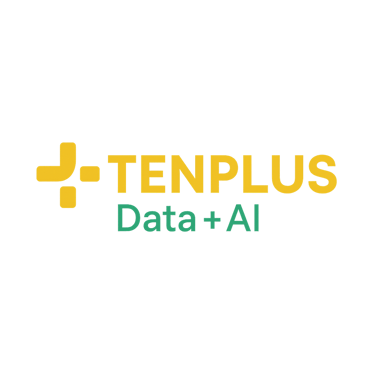Data Democratization and IoT Data Integration for Enhanced Business Insights
A leader in the IoT sector, faced challenges in providing visibility and accessibility to its data across different teams. Despite having vast amounts of data from IoT appliances and mobile app usage, the lack of an integrated platform meant that data was siloed, and no one outside the technical teams could access it. The company needed a solution to democratize access to data, streamline the reporting processes, and ensure that business decisions were driven by accurate, up-to-date insights. The key challenge was to integrate data from multiple sources, including IoT appliances and mobile app usage, into a centralized platform that allowed non-technical teams to gain insights easily.
5/8/20243 min read
Blog list navigation
Sector: IoT
Duration: July 2021 - January 2024
Work Delivered:
End-to-End Data Platform using Databricks:
Designed and implemented a comprehensive data platform using Databricks, enabling seamless integration for data ingestion, processing, and visualization.
Data Integration:
Integrated multiple data sources, including IoT appliance data and mobile app usage data, to provide a unified view of the business and its operations.
Implemented both streaming and batch processing pipelines to ensure real-time and historical data was available.
BI Dashboards and Data Democratization:
Built BI dashboards to allow easy access to data by non-technical users. These dashboards provided insights on appliance usage, user behavior, and system performance.
Ensured that the dashboards were intuitive and provided relevant data for decision-making across different teams (e.g., product development, marketing, operations).
AWS Infrastructure Setup:
Set up the entire Databricks infrastructure on AWS to ensure scalability, reliability, and cost-efficiency.
The platform was designed to grow with client’s data needs and could handle increased load as the IoT ecosystem expanded.
Centralized Data Access:
Established a data mesh architecture that connected various domains (e.g., IoT, app usage, etc.) to a central team for data management, ensuring that each domain had the autonomy to manage its own data while still adhering to organizational data governance standards.
Pressure Points / Challenges:
Lack of Visibility for End-Users:
There was no visibility for the product teams or any other stakeholders regarding how customers were using the appliances.
Teams were unable to access the raw data, leading to missed opportunities for optimization and innovation.
Siloed Data:
Multiple teams had their own dashboards, but the reports weren’t aligned, leading to inconsistency in decision-making across the organization.
No Historical Data for AI Use-Cases:
The company lacked a unified system to track historical data, which hindered the development of AI-driven use cases.
Inability to Calculate Cloud Costs per Appliance:
The team struggled to track how much they were spending on cloud services per appliance, making it difficult to optimize cloud costs.
Program/Project Overview:
Scope: The project was part of a larger initiative to implement a Data Mesh Architecture across the organization. My role focused on a specific domain, working to connect the data teams from different domains to a central data team responsible for overall governance and architecture.
Collaboration: The initiative required extensive collaboration between technical teams (Data Engineers, Data Analysts) and business teams (Product Managers, Marketing Teams) to ensure that business needs were aligned with the technical infrastructure being built.
Problems and Pains (Pre-Project):
No Access to Data:
Teams across the organization were unable to access critical data, preventing them from making data-driven decisions.
Multiple, Unaligned Reporting Systems:
Different departments were using their own reporting systems, leading to discrepancies in reports and confusion when making decisions.
Hard-to-Understand Data:
The data collected was raw and unstructured, making it difficult for non-technical users to derive meaningful insights.
Quantified Impact of Pre-Project Pain Points:
Revenue Decline: The company had been relying on traditional R&D methods for decision-making, resulting in a steady drop in revenue over the years.
Platform Redundancies: Multiple platforms were being used, resulting in $30,000+ in wasted licensing costs.
User Experience: Poor understanding of user behaviors led to suboptimal app experiences. After implementing user behavior tracking, app ratings improved to over 4.5 stars.
User Reviews: By implementing user feedback pipelines, app reviews improved from 1-star to 5-star ratings.
Promises:
Data-Driven Decision-Making:
Enable the IoT team to make informed, data-driven decisions regarding product improvements, marketing strategies, and customer engagement.
Improved User Retention:
By understanding how customers interact with appliances, the platform aimed to increase connected user retention.
Feature Development Based on Data Insights:
All new features would be based on the insights derived from real-time and historical data, ensuring that product development aligned with user needs.
Increased Number of Connected Users:
The project aimed to increase the number of connected users through better product experiences driven by data.
Reduced Connectivity Issues:
By tracking data on appliance performance and connectivity, the project helped reduce connectivity issues and improve overall user experience.
Payoffs:
Client’s Organization:
Cost Savings: By consolidating various reporting systems into a unified platform, Client saved significant amounts on cloud costs and licensing fees.
Better Decision-Making: With centralized data, decision-making was enhanced, enabling leadership to see exactly where costs were being incurred and identify areas for improvement.
Enhanced Product Features: Insights derived from data allowed client to understand user behavior and needs, which led to the development of new features, improved product offerings, and higher customer satisfaction.
Increased User Satisfaction: As a result of better understanding user behavior, Client improved its app ratings and the overall user experience.
Client’s Product and IoT Teams:
Improved Visibility: Teams had access to consistent, real-time data that allowed them to make smarter decisions and prioritize high-impact initiatives.
Streamlined Processes: A centralized data platform meant that teams no longer had to work with disconnected dashboards or struggle with data access issues.
End Users:
Better Product Experience: The improvement in IoT appliances, informed by real-time data insights, led to better customer experiences and fewer connectivity issues.

